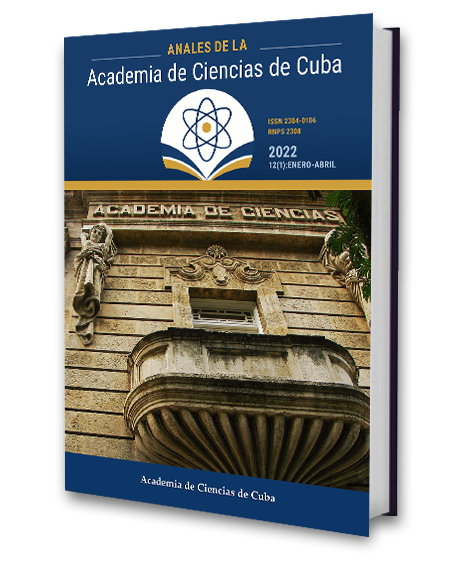Evaluation of the use of microorganisms in the removal of persistent organic compounds and heavy metals
Keywords:
Pseudomonas aeruginosa, rizobacterias, ramnolípidos, hidrocarburos, metales pesadosAbstract
Introduction. Contamination by persistent organic compounds (POCs) and heavy metals in waters and soils is a serious environmental problem. Objectives: To evaluate the use of microorganisms (autochthonous and from collection) and their products, in the removal of these contaminants. Methods. Autochthonous microorganisms were isolated by sequential enrichment. The quantification of rhamnolipids and chlorophenols was performed by colorimetric methods and hydrocarbon removal was gravimetrically quantified. Metals were determined by plasma atomic absorption (AAS-ICP). Results. Rhamnolipid produced by Pseudomonas aeruginosa ORA9 removed more than 50 % of copper present in waters and 75 % of hydrocarbons from contaminated soils. Likewise, the use of 4 bacterial strains and rhizospheric bacteria isolated from contaminated soils allowed up to 84 % and 72 % of hydrocarbon removal and degradation of herbicide 2,4-dichlorophenoxyacetic acid (2,4-D), respectively. On the other hand, the effectiveness of using biological systems for the treatment of hydrocarbon and heavy metal contaminated waters was verified, obtaining percentages of hydrocarbon removal of 60 % and 84 % with a designed airlift bioreactor and an aerobic/anaerobic reactor system, respectively. Finally, using dry microbial biomass, 52 %, 23 % and 14 % of copper, zinc and manganese metals, respectively, present in contaminated waters were extracted. Conclusions: The results of this research constitute the scientific bases to implement a technological package for the remediation of sites contaminated with POCs and heavy metals using microorganisms.Downloads
Published
How to Cite
Issue
Section
License
The journal Anales de la Academia de Ciencias de Cuba protects copyright, and operates with a Creative Commons License 4.0 (Creative Commons Attribution-NonCommercial License 4.0). By publishing in it, authors allow themselves to copy, reproduce, distribute, publicly communicate their work and generate derivative works, as long as the original author is cited and acknowledged. They do not allow, however, the use of the original work for commercial or lucrative purposes.
The authors authorize the publication of their writings, retaining the authorship rights, and assigning and transferring to the magazine all the rights protected by the intellectual property laws that govern in Cuba, which imply editing to disseminate the work.
Authors may establish additional agreements for the non-exclusive distribution of the version of the work published in the journal (for example, placing it in an institutional repository or publishing it in a book), with recognition of having been first published in this journal.
To learn more, see https://creativecommons.org






